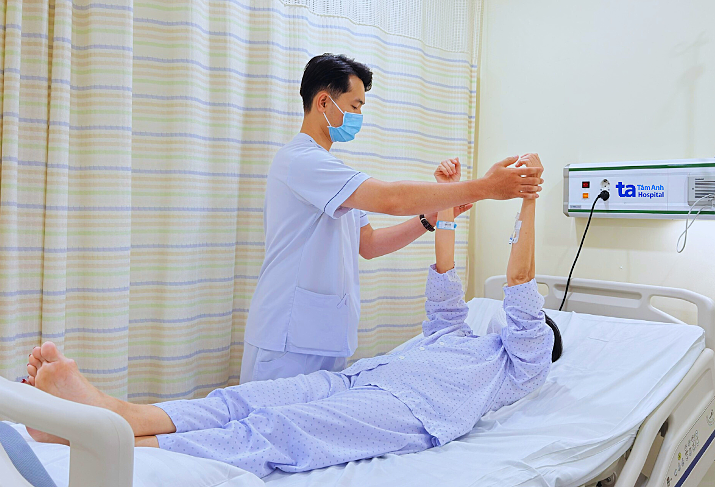Upon arrival at Tam Anh General Clinic, District 7, Mrs. Sau's National Institutes of Health Stroke Scale (NIHSS) score was 5. Dr. Phan Thi Ngoc Loi, a neurology specialist, explained that the NIHSS assesses the prognosis of acute stroke, with higher scores indicating more severe neurological damage. The patient had a history of hypertension and type 2 diabetes – two leading risk factors for stroke. The medical team immediately activated the "Code Stroke" protocol to minimize the time to treatment.
A brain MRI revealed acute ischemic damage, indicating an area of brain tissue deprived of oxygen but not yet fully necrotic. "With prompt treatment, this area can still recover," Dr. Loi stated, adding that the patient was within the "golden hour" (the first 4.5 hours from symptom onset) for clot-busting drug treatment. The medication helps restore blood flow to the blocked artery, salvaging the oxygen-deprived brain tissue, significantly improving the prognosis and shortening the recovery time.
The initial dose of the clot-busting drug was administered intravenously, followed by a continuous infusion for approximately one hour to dissolve the blood clot causing the blockage. After two hours of treatment, Mrs. Sau's condition stabilized, and she was transferred to Tam Anh General Hospital in Ho Chi Minh City for further monitoring.
One day after treatment, her vomiting ceased, dizziness subsided, and her NIHSS score improved to one. She was discharged after 5 days in stable condition, with no residual neurological signs, and complete recovery of motor function and communication. She was advised to manage her blood pressure and blood sugar levels and schedule regular check-ups to minimize the risk of recurrence.
 |
A technician assists Mrs. Sau with light exercises at her bedside. Photo: Tam Anh General Hospital |
A technician assists Mrs. Sau with light exercises at her bedside. Photo: Tam Anh General Hospital
Dr. Loi advises individuals with hypertension, diabetes, or high cholesterol to maintain these indicators within safe ranges and undergo stroke screening 1-2 times a year. If experiencing suspected stroke symptoms such as loss of balance, blurred vision, facial drooping, weakness in the arms or legs, difficulty speaking, or slurred speech, seek immediate medical attention at a hospital with a specialized stroke unit for prompt assessment and treatment.
While awaiting emergency services, help the patient lie down in a well-ventilated area, loosen their clothing, and elevate their head 20-30 degrees to promote cerebral blood flow, preventing falls and injuries. In case of vomiting, position the patient on their side at a 45-degree angle and clear any mucus from their mouth to prevent choking and airway obstruction. Avoid folk remedies like scraping, applying balm, pricking fingertips, or giving food, drinks, or medication, as these can worsen the condition and delay crucial "golden hour" treatment.
Lan Anh
*The patient's name has been changed.
| Readers can submit questions about neurological conditions here for expert answers. |












